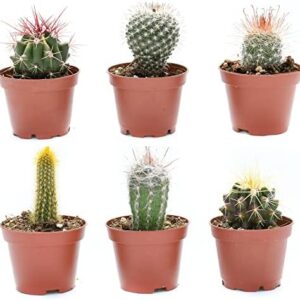Have you ever wanted to expand your garden or share your favorite plants with friends and family? Plant propagation, or the process of creating new plants from existing ones, is a satisfying and cost-effective way to do just that. One popular method of propagation is growing plants from cuttings, which involves taking a piece of a plant – typically a stem, leaf, or root – and encouraging it to grow roots and eventually develop into a new plant.
While it may seem daunting at first, mastering the art of plant propagation through cuttings is actually quite simple once you understand the basic principles and techniques. In this article, we will guide you through the process of successfully growing cuttings and share some expert tips to help you achieve lush, thriving plants in no time.
Choosing the Right Plant Material
The first step in growing cuttings is to select the right plant material. Not all plants can be propagated through cuttings, so it’s important to choose a plant that is suitable for this method. In general, soft-wooded plants such as herbs, houseplants, and annuals are ideal candidates for propagation through cuttings. Additionally, plants that have nodes – the points on a stem where leaves are attached – are more likely to root successfully.
When selecting a cutting, look for a healthy, disease-free stem that is free of any signs of damage or stress. It’s best to take cuttings in the morning when plants are fully hydrated, as this will increase their chances of rooting successfully. Use sharp, clean pruning shears to make a clean cut just below a node, and remove any excess leaves from the lower part of the cutting to reduce water loss.
Preparing the Cutting
Once you have selected a suitable cutting, it’s time to prepare it for propagation. Start by dipping the cut end of the stem in a rooting hormone, which will encourage the growth of new roots. Rooting hormones are available in powder, liquid, and gel forms, and can be found at most garden centers or online.
Next, prepare a pot or container filled with a well-draining rooting mix, such as perlite, vermiculite, or a mixture of peat moss and sand. Make a hole in the rooting mix with a pencil or chopstick, and carefully insert the cutting into the hole, ensuring that at least one node is buried beneath the surface.
Caring for the Cutting
Once the cutting is in place, it’s important to provide the right conditions for it to root successfully. Place the pot in a warm, bright location out of direct sunlight, and mist the cutting with water regularly to keep the rooting mix moist. Avoid overwatering, as this can lead to root rot and other issues.
To create a humid environment for the cutting, cover the pot with a plastic bag or place it in a propagator. This will help retain moisture and encourage the cutting to root more quickly. Check the cutting regularly for signs of growth, such as the emergence of new leaves or roots, and be patient – some plants can take several weeks or even months to root successfully.
Transplanting the Cutting
Once the cutting has developed a healthy root system, it’s time to transplant it into a larger pot or directly into the garden. Carefully remove the cutting from the rooting mix, taking care not to damage the delicate roots, and place it in a container filled with potting soil or directly in the ground.
Water the newly transplanted cutting thoroughly, and continue to provide it with the right care and attention as it establishes itself in its new home. Keep in mind that young plants may be more susceptible to environmental stress, so it’s important to monitor them closely and make any necessary adjustments to ensure their continued growth and health.
Expert Tips for Success
While the process of growing cuttings is relatively straightforward, there are a few tips and tricks that can help increase your chances of success. Here are some expert tips to help you master the art of plant propagation through cuttings:
1. Choose healthy, disease-free plant material to increase the likelihood of successful rooting.
2. Use a sharp, clean knife or pruning shears to make clean cuts and reduce the risk of infection.
3. Dip the cut end of the cutting in a rooting hormone to encourage the growth of new roots.
4. Provide a warm, bright location for the cutting to root, and maintain consistent moisture levels to prevent drying out.
5. Be patient and monitor the cutting regularly for signs of growth, such as the emergence of new leaves or roots.
6. Transplant the cutting into a larger container or directly into the garden once it has developed a healthy root system.
By following these tips and techniques, you can successfully grow cuttings and expand your garden with lush, healthy plants. Plant propagation is a rewarding and sustainable practice that allows you to create new plants from existing ones, share your favorite varieties with others, and enjoy the satisfaction of watching your cuttings develop into thriving plants. So grab your pruning shears and rooting hormone, and start mastering the art of plant propagation today!






